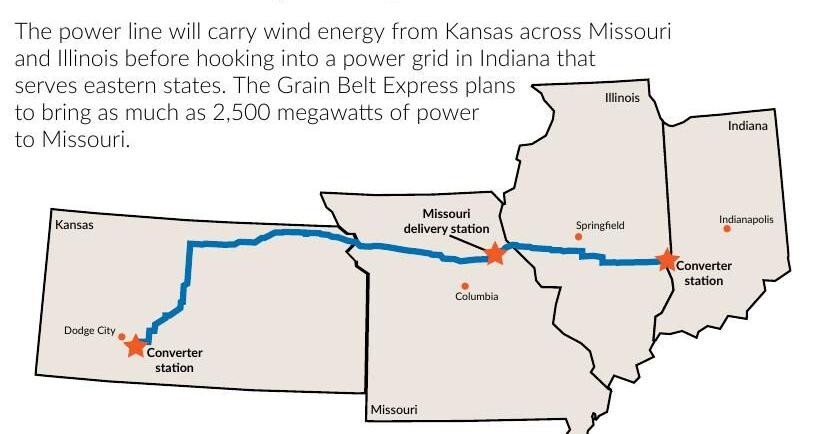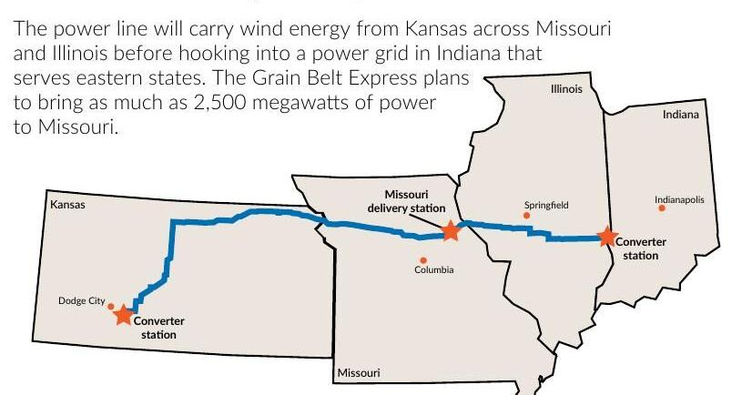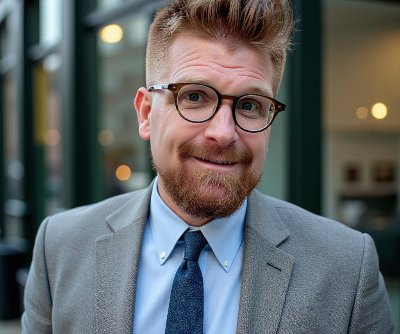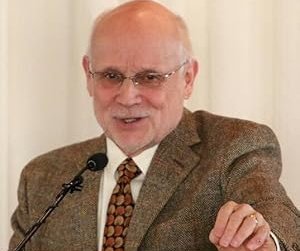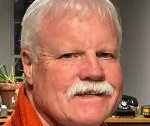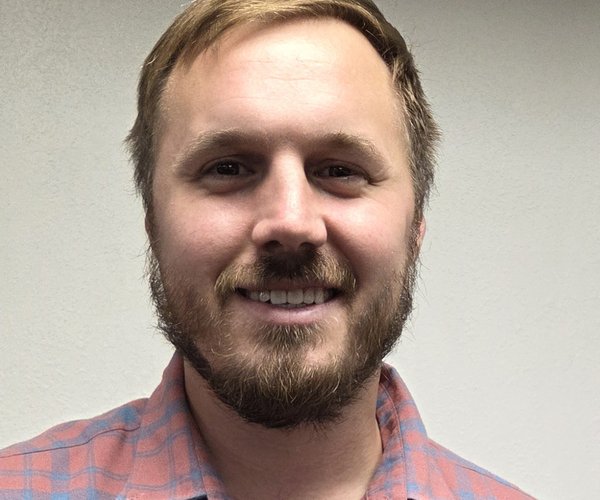Corporations that see Kansas as flyover country are quick to see opportunities for energy projects – from oil to wind and solar. Even when these projects are successful, they may not be beneficial to Kansas, depending on your point of view.
The Grain Belt Express project aims to bring as much as 2,500 megawatts of power to Missouri via an 800-mile high-voltage direct current transmission line. This summer’s cancellation of a $4.9 billion federal loan doesn’t appear to have halted this $12 billion project. Some landowners in Barton County are benefitting by leasing ground, although we know one reluctant landowner faced a forced sale due to eminent domain.
There have also been plans for solar energy projects. News that Acciona Energia had dropped out of a solar project here was greeted as good news by some, who expressed environmental concerns at the Cheyenne Bottoms Wildlife Area and quality of life/safety concerns closer to Great Bend. But while we don’t know where the project stands, that doesn’t mean it won’t happen in some form at some future date.
Patrick Richardson at The Sentinel noted that on July 23, the United States Department of Energy issued a release stating the federal loan guarantees had been rescinded, and projects that required federal permitting would face tighter restrictions. President Trump’s “One Big, Beautiful Bill” passed in August also ended the industry’s lifeblood – production tax credits for industrial wind and solar – by the end of 2027.
“The conditional commitment, which would have provided a taxpayer-funded loan guarantee of up to $4.9 billion dollars (for GBE), was issued by the Biden administration in November 2024 – one of many conditional commitments that were rushed out the door in the final days of the Biden administration,” the federal release stated. “After a thorough review of the project’s financials, DOE found that the conditions necessary to issue the guarantee are unlikely to be met, and it is not critical for the federal government to have a role in supporting this project. To ensure more responsible stewardship of taxpayer resources, DOE has terminated its conditional commitment.”
Richardson asked, “If the Grain Belt Express can move forward without taxpayer funds, it begs the question of why federal loans were needed in the first place.”
Richardson also noted that Grain Belt Express has multiple downsides for Kansas. If completed, it will be independent of the Southwest Power Pool — the regional electric grid of which Kansas is a member – sending power generated in Kansas out of state.
Companies pay local governments a Pay In Lieu of Taxes (PILOT) for 10 years, but it rarely comes to as much as the exempted property taxes would have, according to Jim Zakoura, an attorney who specializes in power issues.
The recent outpouring of public interest reminded us that good zoning regulations created before any problems arise are crucial. Even though representatives from Acciona were experts and provided meaningful suggestions for solar regulations, it is not a good idea to be too trusting by allowing any industry to create its own rules.
Kansas’s regulatory environment for solar is a mix of state and local rules and it is evolving. There are many stakeholders – investors, installers, utilities and consumers – not to mention people who have environmental concerns. The Kansas Energy Transition Atlas is looking at wind and solar regulations in the 105 counties. It was created by researchers at the University of Kansas. Maybe the regulations shouldn’t be uniform statewide After all, the issues in preserving Cheyenne Bottoms may be different than the concerns in other parts of the state. What we do know is that just as Kansas needs to think about the future when making plans for water, we also need to be forward thinking when it comes to wind and solar, and whatever we pull from the earth. We might consider The Seventh Generation Principle, based on an ancient Iroquois philosophy that the decisions we make today should result in a sustainable world seven generations into the future. Looking at least 100 years into the future would be a good start.
